PenInHand - Musings on the Hobby
That Minty Freshness
by Jim Mamoulides, May 31, 2003
Why does it matter if a new pen is mint?
The fact that this question even gets asked says a lot about the state of fountain pen sales.
Many, many years ago, in another galaxy, fountain pens were as common as knives, forks and toothbrushes. People would get up in the morning, clean up and dress for the day, eat breakfast, go off into the world, and if they had reason to put an idea down on paper, they would very likely, without a thought or hesitation, take out a fountain pen and jot down that idea.
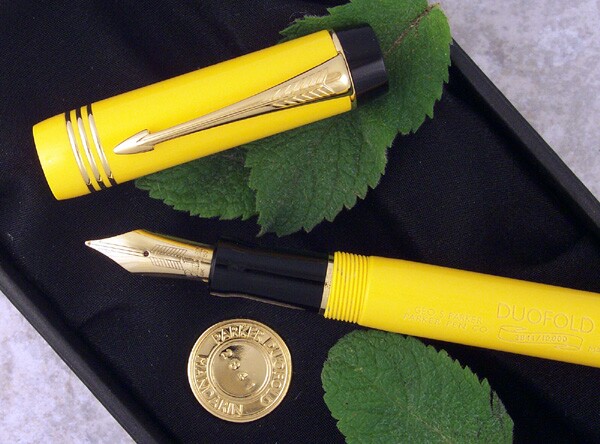
Parker Duofold
Mandarin Limited Edition 1995
Very likely that pen was purchased at the corner drugstore. Perhaps the pen was in a display under the checkout counter. Looking longingly at the array of shiny new pens, the clerk would pull one out and offer to ink it and let the prospective owner try out the pen on a test pad with the pen manufacturer's name on it.
"Could the nib be changed to a finer point?"
"Of course! We have several, and I can change it right now. Would you like to try it now?"
"Yes!"
If it turned out the buyer did not like the pen, it would be flushed, and put back in the case, waiting for another prospective owner. Is the pen still mint?
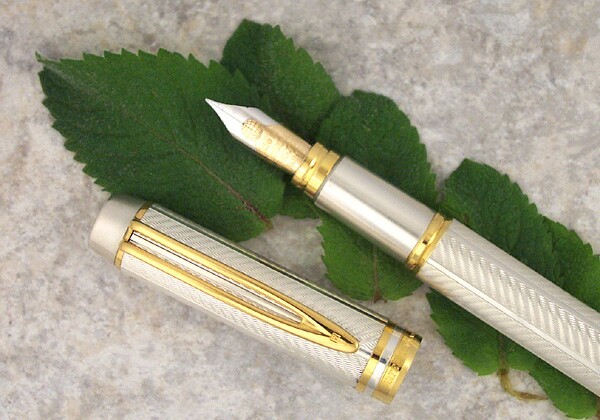
Waterman Etoile
Limited Edition 1993
Before the pen even came to the store, someone in a busy Midwestern or Northeastern USA factory was dipping the nib and writing silly swirls on a test pad and making any required last minute adjustments to make sure it would write correctly. Some of that test ink would still be in the feed when the pen eventually was placed in one of the boxes that would sit in the display case at the drugstore. Is the pen still mint?
Fast forward fifty or sixty years...
This is one of the things that makes me crazy. Since a fountain pen can only truly be tested when filled, why would a modern high dollar pen not be write tested before it's packed and shipped? Why are there so many complaints about the out of the box writing quality of many modern pens? I'm very sorry that this is most likely a rhetorical question.
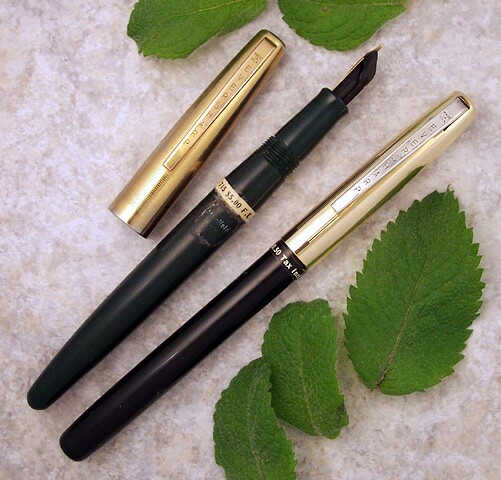
A Pair Of Mint
Eversharp Venturas c1953-1957
It seems that over time, as fountain pens have moved from everyday tools that needed to work well or they wouldn't sell to pocket jewelry used infrequently for notes and signatures, something got lost. There was a lot of handwork in early pens, leading them to be write tested before they left the factory. It was also not uncommon for customers to be encouraged at the point of sale to try out a pen before they purchased it. The product was expected to be used.
Today, there is almost a fetish about minty freshness in some corners of the hobby. There are collectors who worry whether even the box has been opened. "Has the pen ever been handled? Has it been inked?" How about the question, "Does it write well?" Any sign of ink residue in the feed somehow relegates the pen to the discount bin. I've witnessed this being explained hurriedly as, "They test wrote it at the factory," to a big sigh of relief! There are rumblings that some high dollar pens aren't even ink tested at the factory. Imagine.
I have some hope, though. All my Duofold Centennials were obviously tested (they had quite a bit of dry ink residue in the feed - you can try this at home by dipping a "mint" pen in a cup of water) and they all write very nicely and problem free. This "mint" thing is to me, a nutty idea.
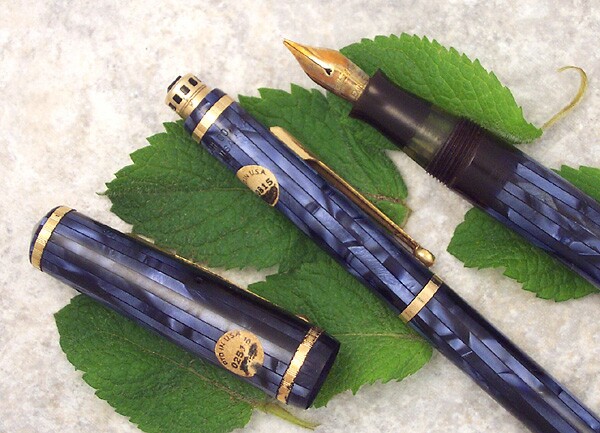
Mint Wahl Eversharp
Pacemaker Pen And Pencil Set 1938-1941
I know to some here I'm speaking sacrilege, but I would rather buy a pen that has been inked (by me or purchased from a dealer / collector who has written with it) so I can understand the character of what I am buying because I actually intend to write with it. There is a fine pen dealer in my local area that I visited recently that had one of the new Parker 51 Special Edition pens in the display case. I asked to have a look at it, and after unscrewing the barrel I noticed that the converter clearly had been used.
The sales rep was actually pulling an ink bottle and test pad out from under the counter in case I wanted to test write the pen. Unfortunately, this is some kind of otherworldly experience in many pen stores, and it seems that it's because either collectors insist on "mint" pens, or pen stores aren't willing to dispel this entire "mint" myth and actually sell pens as writing instruments.
To continue the pen store story, I asked about test writing pens, and the answer I got was along the lines of, "How else are you going to know if you like it?"
Guess what the only issue the store had with testing their pens? You scratch it or break it, you buy it.
Should you ink that minty pen in the classy box, or should you preserve its freshness for another time, another generation? Or should you ink it up and use it, as it was intended?
To me, the joy in fountain pen collecting is in their use. These are tools, meant for putting our thoughts on paper.
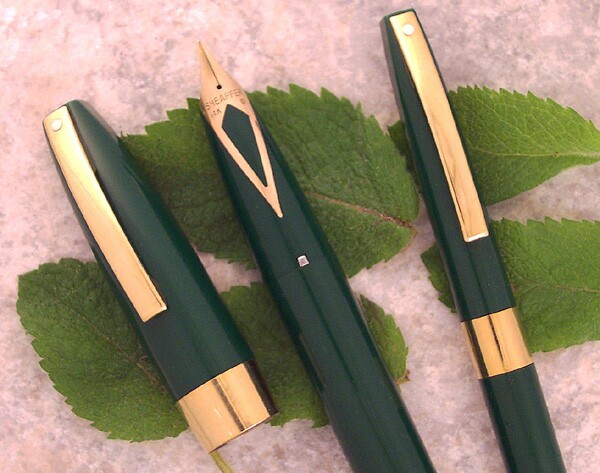
Mint Sheaffer PFM
III Pen And Pencil Set 1959-1968
If you run across a unique vintage pen that absolutely is a museum piece, with all its stickers still intact, as on the day it was purchased, then no one will fault you for giving pause to the decision to remove the stickers and ink it up. On the other hand, it would be very hard indeed to sell me an expensive modern pen and keep me from using it.
Why else would I buy it?
Discuss / Recommend what you read on PenHero.com
Follow us on Twitter: PenHero
Add a link to PenHero.com on your blog:
(Copy & paste code)
Please only use the photo provided. Use of other photos requires permission.
The provided link photo will change as we update the site.
Comments on this article may be sent
to the author, Jim Mamoulides
PenHero.com Bibliography
